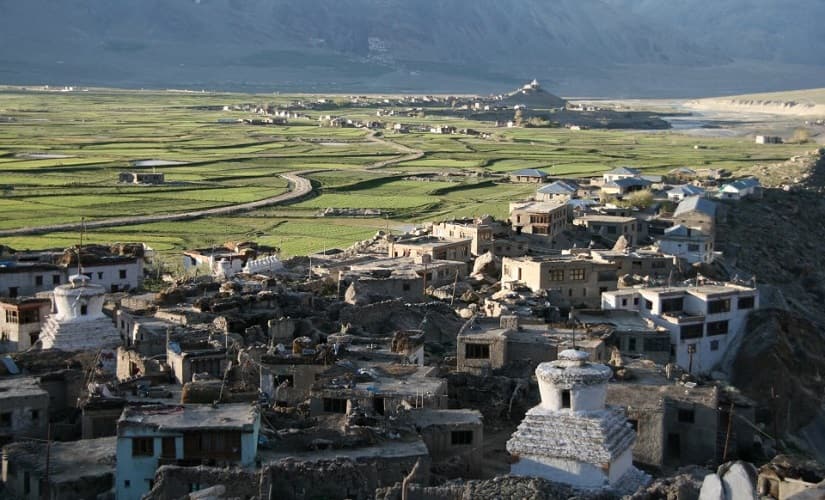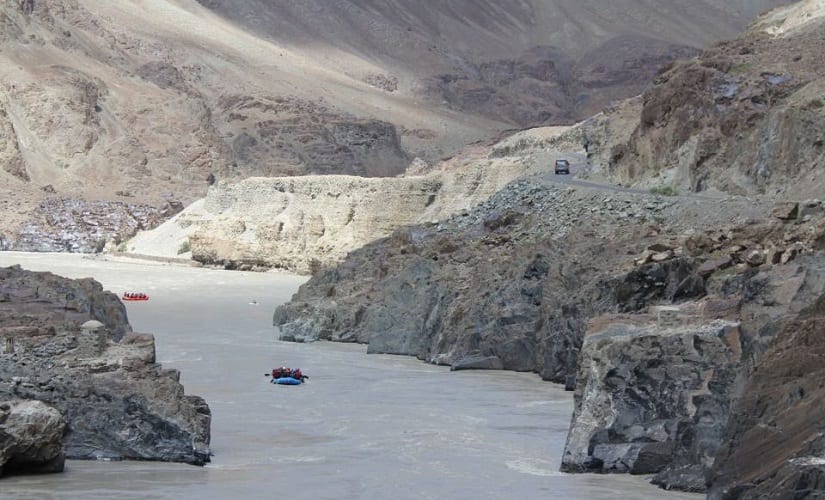P Namgail found out about the demonetisation move announced by the Prime Minister Narendra Modi a day after he reached Zanskar in the Ladakh region of Jammu and Kashmir. A resident of Shaday village, Namgail sent home one of the village boys working in Kargil town with the news. “After a day-long journey, he reached home and told villagers that Rs 500 and Rs 1,000 notes will cease to be legal tender and they must be deposited in banks. However, the villagers laughed at him. Even the sarpanch didn’t believe him,” Namgail, 24, told Firstpost on the phone on Sunday. Less than 1,000 souls live in a cluster of hamlets called Shun, Shaday and Ralakung in Zanskar Valley. In local parlance, these hamlets are called “attic on the rooftop” of the world. And if the villagers — younger ones — were to make a trip down to Zanskar, they have to walk for at least 12 to 14 hours because there is no motorable road. [caption id=“attachment_3143770” align=“alignnone” width=“825”] Zanskar Valley. Image courtesy: Facebook[/caption] India, they say, lives in its villages. But these clusters of habitations in the arid Ladakh region remain disconnected most of the time from the rest of civilisation. “Even in the 21st Century, we still lack electricity. Television is an unthinkable luxury. It takes young people like me 12 to 14 hours to reach Zankar. For elders, it can take up to three days,” he said. Zanskar tehsil has only one bank branch, which is operated by the Jammu and Kashmir Bank for the population of nearly 20,000 people. Most people prefer to hoard money in their homes since they lack trust in the banking system. “People in places like ours don’t have enough trust in financial institutions or banking system. How would one make them understand that the notes they possess in their homes will turn into pieces of paper and they have to be deposited in banks?” asked Namgail. Shabir Ahmad, a teacher and zonal resource person in the Zonal Education Office of Zanskar, says most of the people, who live in these far flung areas, had no idea about the prime minister’s new plan. “Electricity is still a dream in these villages. There is no motorable road. Helicopter is the only way to reach there. During elections, the Election Commission sets up booths for voters there, but no politician comes to even ask for them. They live so far from us,” Shabir says. [caption id=“attachment_3143774” align=“alignnone” width=“825”]
 The village of Padum in the Zanskar Valley. Image courtesy: Facebook[/caption] Locating a resident of these villages is an arduous task. Firstpost made at least 37 calls to track down people living in this part of the arid region. Finally, when we did manage to speak to one resident, he said some people did come to Zanskar with small cash to exchange it while others have preferred to keep it with them, thinking that someone was playing a prank. Most young residents in these cluster of villages have migrated to a village called Serpho on the Leh-Himachal border where they work as daily wage labourers. Buddhism is the dominant religion among the people here with few Muslims in Zanskar’s total population of 20,000. Dr Sonam Jolden, a lecturer, said people living in Leh and Kargil were rattled by the news of demonetisation because many of them have no TV or mobile phones. “Dissemination of information is a tricky job. If you want to send them any information, you need to send people on foot to tell them about developments or any other information.” Dr Jolden said people who live in these far flung areas of Zanskar don’t have bank accounts because they hardly have access to banks and most of them keep their life savings at home in cash. When access to information is limited, he says there are thousands of people in Ladakh who have been affected by the decision. [caption id=“attachment_3143784” align=“alignnone” width=“825”]
The village of Padum in the Zanskar Valley. Image courtesy: Facebook[/caption] Locating a resident of these villages is an arduous task. Firstpost made at least 37 calls to track down people living in this part of the arid region. Finally, when we did manage to speak to one resident, he said some people did come to Zanskar with small cash to exchange it while others have preferred to keep it with them, thinking that someone was playing a prank. Most young residents in these cluster of villages have migrated to a village called Serpho on the Leh-Himachal border where they work as daily wage labourers. Buddhism is the dominant religion among the people here with few Muslims in Zanskar’s total population of 20,000. Dr Sonam Jolden, a lecturer, said people living in Leh and Kargil were rattled by the news of demonetisation because many of them have no TV or mobile phones. “Dissemination of information is a tricky job. If you want to send them any information, you need to send people on foot to tell them about developments or any other information.” Dr Jolden said people who live in these far flung areas of Zanskar don’t have bank accounts because they hardly have access to banks and most of them keep their life savings at home in cash. When access to information is limited, he says there are thousands of people in Ladakh who have been affected by the decision. [caption id=“attachment_3143784” align=“alignnone” width=“825”] White water rafting in Zanskar Valley. Image courtesy: Facebook[/caption] “Their life will turn upside down. A majority of these people might not have even heard about the government’s decision. There is one group, even in the main towns of Leh and Kargil that has been severely hit — the women. They keep their savings in hard cash at home. Even people who work as tour guides keep their savings, not in the bank, but in hard cash. They will be the worst hit,” he said.
White water rafting in Zanskar Valley. Image courtesy: Facebook[/caption] “Their life will turn upside down. A majority of these people might not have even heard about the government’s decision. There is one group, even in the main towns of Leh and Kargil that has been severely hit — the women. They keep their savings in hard cash at home. Even people who work as tour guides keep their savings, not in the bank, but in hard cash. They will be the worst hit,” he said.
P Namgail found out about the demonetisation move announced by the Prime Minister Narendra Modi a day after he reached Zanskar in the Ladakh region of Jammu and Kashmir
Advertisement
End of Article


)

)
)
)
)
)
)
)
)



